Have you ever been goaded into trying cow tipping? Is counting sheep really the best way to get to sleep? Will goats actually eat tin cans? There are some particularly funny farm myths that have become a part of culture, thanks to movies, TV, or just a good ol’ fashioned misconception of how farm life works.
Can you tell fact from some of the most comical fiction? Let’s bust eight funny farming myths and separate the sheep from the goats:
Myth #1: Cow tipping is a thing
Is cow tipping a real thing? Can you push over a sleeping cow? Cow tipping isn’t actually the favorite pasture pastime of rambunctious rural youth. This isn’t a real thing. Cows actually sleep while lying down, not standing up. And they can rest for about 10 to 14 hours per day.
Cows are also very aware of their surroundings. With eyes on the sides of their heads, they can see about 300 degrees around them without moving. Combined with being prey animals, they’re very difficult to sneak up on. It would also take a lot of force (about five people) to push a cow over (these animals can easily be 1,200 to 1,600 pounds), assuming they wouldn’t move out of your way in the first place.
Also, cows can shift their weight and move away from strange people trying to tip them over. So much for cow tipping!
Myth #2: Horses only sleep standing up
Cows don’t sleep while standing up, but what about horses? Horses actually do often sleep while standing up, but they don’t just sleep while standing. They also need to be able to lie down too.
Why do horses sleep while standing? Horses, like cows, are prey animals. In the wild, sleeping while standing allows them to be able to quickly run away if a predator shows up. Horses are able to sleep while standing due to the stay apparatus. The stay apparatus is an arrangement of their muscles, ligaments, and tendons that allow horses to stand on three legs, while resting the other.
Even though horses can sleep while standing up, they also need to be able to lie down to sleep. Both humans and horses go through different stages of sleep, some lighter and some deeper. Lying down allows horses to get the deep sleep they need for their brains to work properly.
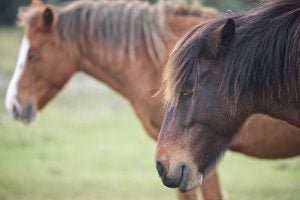
Myth #3: Brown cows make chocolate milk
If you thought this was true, then you’re in line with about 7 percent of the American population. But nope, this isn’t how it’s done. All dairy cows, regardless of color, produce white milk. Chocolate milk is just regular milk with cocoa and sugar added to it. In the same way, red cows don’t make strawberry milk either. Chocolate milk has the same 13 essential nutrients as white milk, and can help encourage children and adults alike to drink it and gain the same nutritional benefits! (See this article to learn more about chocolate milk myths.)
Some of the confusion comes from people not realizing that there are different breeds of dairy cows. The majority of dairy cows in the U.S. are Holsteins (black and white ones), but there are other dairy breeds such as Jerseys, Brown Swiss, Ayrshires, and many more around the world!
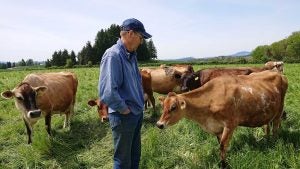
Myth #4: Benjamin Franklin preferred the turkey as the U.S. national bird
What did this Founding Father have against the bald eagle? Benjamin Franklin once expressed that the turkey was more respectable compared to the bald eagle as a symbol of our country in a letter to his daughter in 1783.
The content of his letter articulated his disdain when he discovered that the Society of Cincinnati (a group of officers under George Washington) were looking to create an order of hereditary merit preferring eldest sons. Franklin, being from a long line of younger sons, scorned their aristocratic leanings, which included using the eagle as a symbol.
There are no other instances of Franklin preferring the turkey to the eagle. He had, in fact, served on committees that used the eagle and had used the eagle himself as a symbol. The comment about the turkey versus the eagle was likely meant to be a warning against establishing aristocratic systems, rather than a comment directly about wanting the turkey to be the emblem of the U.S.
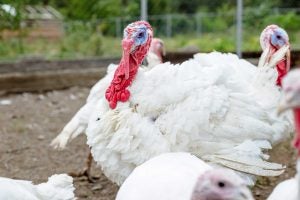
Myth #5: Counting sheep is best for getting to sleep
Have you ever been told to just count sheep to help you fall asleep? Generally people picture sheep jumping over a fence and try to count them. Having animals jump over a fence and get out doesn’t sound very soothing.
Counting sheep is supposed to be such a boring task that it puts you to sleep. But actually scientists have seen the opposite. A study at UC Berkeley found that counting sleep actually made it harder to fall asleep. Mental imagery, like picturing a relaxing scene, tends to be more effective.
Myth #6: Pigs are dirty
Actually pigs prefer to be clean. In some situations they may roll in the mud to cool off and to protect themselves from the sun. However, they are overall clean animals.
Pig farmers work hard to keep their barns clean, and they collect pig waste for use as high quality fertilizer. In modern housing systems, pens are sanitized between groups and people are required to sanitize before entering the barn. Biosecurity, which helps to protect animal health, is vital for promoting high quality animal welfare.
Myth #7: Goats eat tin cans
Goats actually don’t actually eat everything (like tin cans)! They may chew on the tin can, but that’s generally because they’re eating the label and the glue, not the can itself. As far as their usual diet of forages, goats can be particular about what they eat.
A fun fact about goats is that they’re browsers rather than grazers. They like to eat what’s up high, like leaves and berries on trees, as well as grasses, weeds, and other things on the ground.
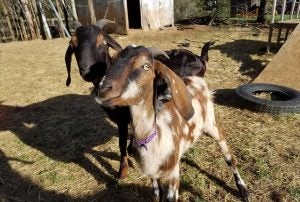
Myth #8: Roosters only crow at sunrise
Roosters can crow at any time — sunrise, noon, sunset, and just whenever! Their loud “cock-a-doodle-doo” helps them to protect their flock. They crow to assert dominance, warn of any danger (like predators), and to communicate with their flock. It’s very noticeable when they crow at sunrise, since that’s typically when they start crowing.
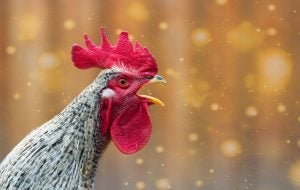
Don’t automatically believe everything you read — and make sure you trust your sources. While the myths listed in this article are silly and funny, they show how easily misconceptions can spread and be accepted as fact. Now, after reading this, you’ll also have some fun facts to throw out at parties.
Plus, the next time someone asks you to go cow tipping, you won’t make that moos-take again.
Michelle Miller, the “Farm Babe,” is an internationally recognized keynote speaker, writer, and social media influencer and travels full time to advocate for agriculture. She comes from an Iowa-based row crop and livestock farming background and now resides on a timber farm in North Central Florida.



